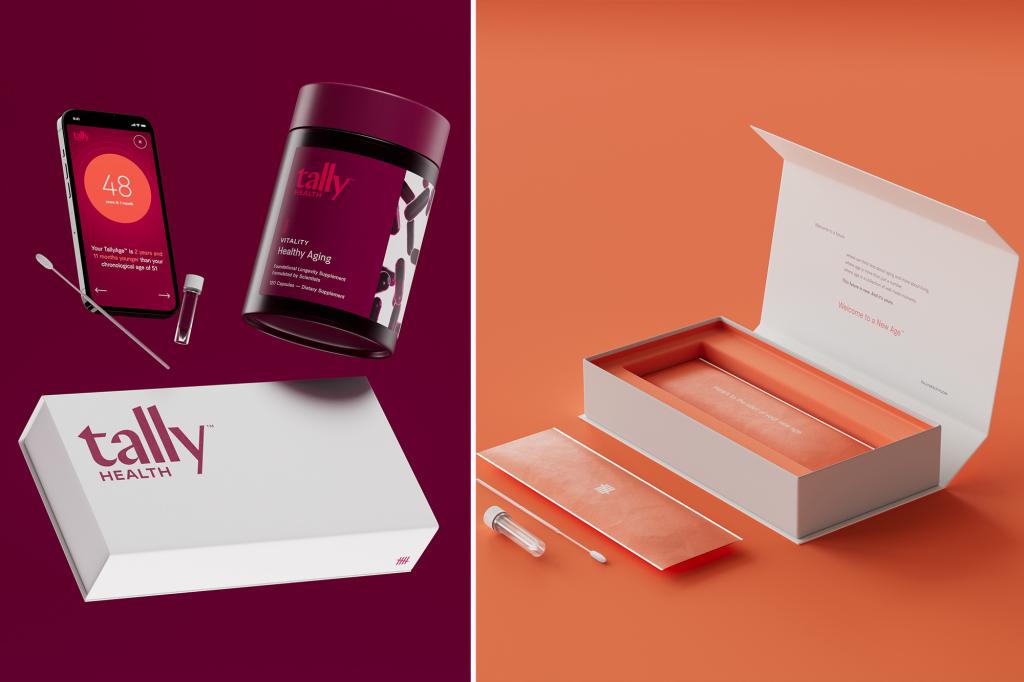Unveiling the Secrets of Your Biological Age: How a Home Cheek Swab Test Works
Forget the candles on your birthday cake—your biological age might tell a more accurate story about your health. A new wave of at-home cheek swab tests now promises to reveal your body’s true aging rate by analyzing DNA methylation patterns. These tests, available from companies like Elysium Health and TruDiagnostic, claim to measure cellular wear and tear with over 90% accuracy, offering insights into longevity risks and wellness strategies. But how reliable are they, and what can they truly reveal? We investigate the science, benefits, and limitations of this emerging health tech.
The Science Behind Biological Age Testing
Biological age tests analyze epigenetic markers, specifically DNA methylation—chemical tags that accumulate on DNA over time and influence gene activity. Unlike chronological age, which ticks predictably, biological age reflects lifestyle, genetics, and environmental exposures. A 2023 study in Aging Cell found methylation tests could predict mortality risk better than traditional biomarkers like blood pressure.
“These tests measure hundreds to thousands of methylation sites linked to aging,” explains Dr. Sarah Chen, a geneticist at Stanford University. “For example, smoking or chronic stress can accelerate methylation changes, making your cells ‘older’ than your birth certificate suggests.”
Key factors influencing biological age include:
- Diet: Mediterranean diets correlate with slower epigenetic aging
- Exercise: Regular activity reduces methylation associated with inflammation
- Sleep: Poor sleep quality can add up to 3 years to biological age
How At-Home Tests Stack Up Against Clinical Methods
While lab-based epigenetic tests like Horvath’s Clock have been used in research for a decade, consumer versions simplify the process. Users swab their cheek, mail the sample, and receive results in 2–4 weeks. Companies claim 95–99% concordance with lab tests, but independent verification remains limited.
A 2022 Nature Communications study comparing five direct-to-consumer tests found variability in results for the same individual. “Differences in analyzed methylation sites and algorithms mean one test might show you’re 5 years younger, while another says you’re 3 years older,” notes Dr. Michael Ruiz, a biogerontologist at UCLA.
Pros of at-home tests:
- Non-invasive compared to blood draws
- Track changes over time with repeat testing
- May motivate lifestyle improvements
Cons to consider:
- Margin of error (±3 years in some cases)
- Limited clinical utility for disease prediction
- Privacy concerns regarding genetic data
What Your Biological Age Reveals About Health
Beyond a vanity metric, accelerated biological age correlates with higher risks for:
- Cardiovascular disease (42% increased risk per 5-year acceleration)
- Type 2 diabetes (NIH 2021 data shows 17% higher incidence)
- Neurodegenerative conditions like Alzheimer’s
However, experts caution against overinterpretation. “A high biological age doesn’t guarantee illness, just as a low one doesn’t make you invincible,” says Dr. Elena Petrova, a longevity researcher. “It’s a snapshot, not a crystal ball.”
Notably, some tests now offer “age reversal” reports tracking improvements after interventions. A 2023 pilot study showed participants who followed personalized nutrition and exercise plans reduced their biological age by an average of 1.2 years in 8 months.
Ethical Considerations and Future Developments
As these tests enter mainstream wellness culture, concerns emerge about data privacy and psychological impacts. Unlike 23andMe, most epigenetic tests don’t analyze inherited genes, but methylation data could theoretically be used to infer health risks.
The FDA currently classifies these tests as LDTs (laboratory-developed tests), requiring no premarket approval. “We need standards for accuracy claims and data protection,” argues bioethicist Dr. Liam Foster.
On the horizon:
- Integration with wearable tech for real-time aging metrics
- AI-driven personalized aging interventions
- Clinical applications for monitoring treatment efficacy
Should You Try a Biological Age Test?
For health-conscious individuals, these tests offer intriguing—if imperfect—insights. “View results as a conversation starter with your doctor, not a diagnostic tool,” advises Dr. Chen. Pairing tests with biomarker tracking (like inflammation levels) provides clearer health pictures.
As research advances, biological age testing may revolutionize preventive medicine. For now, consumers should weigh costs ($100–$300 per test) against potential benefits. Those intrigued can explore research-backed companies with CLIA-certified labs and transparent data policies.
Ready to explore your biological age? Consult a healthcare provider to discuss how test results could fit into your wellness plan—and remember, lifestyle changes remain the most proven way to turn back your cellular clock.
See more WebMD Network



